What is Co-Teaching?
Co-teaching occurs when two educators share responsibility for planning, delivering, and assessing instruction for a single group of students. Typically, this partnership pairs a general education teacher with a special education teacher, though co-teaching can also involve other specialists such as English language instructors, reading specialists, or gifted education teachers.
At its core, co-teaching is about combining the expertise of multiple educators to better serve diverse student needs. The general education teacher brings deep content knowledge and curriculum expertise, while the special education teacher contributes specialized instructional strategies and individualization techniques. Together, they create a learning environment that supports all students.
This collaborative approach requires strong teacher skills in communication, flexibility, and shared decision-making. When implemented effectively, co-teaching reduces the student-to-teacher ratio, increases instructional options, and provides more opportunities for differentiation and individualized support.
Co-Teaching Models That Work
Effective co-teaching relies on selecting the right instructional model for your learning objectives, student needs, and teaching context. Each model offers different advantages and requires specific teacher skills to implement successfully.
One Teach, One Observe
In this approach, one teacher leads instruction while the other gathers specific data on student behavior, learning, or participation. This model is particularly valuable for assessment purposes and requires strong observational teacher skills.
One Teach, One Assist
One educator takes primary responsibility for teaching while the other circulates, providing assistance to struggling students. This approach works well when introducing new content but should be used sparingly to avoid creating a “lead teacher/assistant” dynamic.
Station Teaching
The class is divided into groups that rotate through different learning stations, with each teacher facilitating one or more stations. This model maximizes small-group instruction and allows teachers to play to their strengths in different content areas.
Parallel Teaching
Teachers divide the class into two groups and simultaneously teach the same content. This approach reduces the student-teacher ratio and allows for more participation and individualized attention.
Alternative Teaching
One teacher works with a small group of students who need specialized attention while the other teaches the larger group. This model supports pre-teaching, re-teaching, or enrichment but should be implemented carefully to avoid stigmatizing students.
Team Teaching
Both educators share instruction, taking turns leading discussions, demonstrating concepts, or modeling skills. This approach requires strong collaborative teacher skills and a comfortable working relationship.
Enhance Your Co-Teaching Skills
Looking to master these co-teaching models? Our comprehensive professional development course provides practical strategies, ready-to-use templates, and expert guidance to help you implement effective co-teaching in your classroom.
Benefits of Co-Teaching for Students and Teachers
When implemented effectively, co-teaching creates powerful advantages for both students and educators.
Student Benefits
- Reduced student-to-teacher ratio
- Increased individual attention and feedback
- Access to multiple teaching styles and perspectives
- More opportunities for differentiated instruction
- Seamless support for students with special needs
- Enhanced classroom engagement and participation
- Exposure to collaborative problem-solving models
Teacher Benefits
- Shared responsibility for planning and assessment
- Opportunities to learn new teaching strategies
- Professional growth through collaboration
- Enhanced classroom management capabilities
- Reduced isolation and increased support
- More creative instructional approaches
- Improved teacher skills through peer feedback
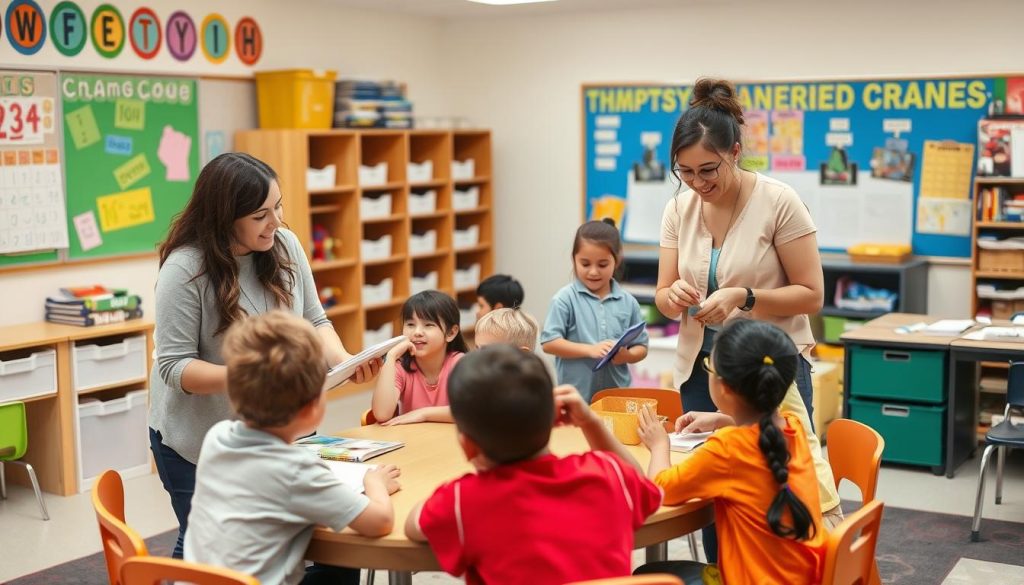
Research consistently shows that effective co-teaching leads to improved academic outcomes, particularly for students with disabilities. According to a study published in the Journal of Special Education, students in co-taught classrooms demonstrated higher achievement in reading and math compared to those in solo-taught settings.
Making Co-Teaching Work: Essential Strategies
Successful co-teaching partnerships don’t happen by accident. They require intentional effort, clear communication, and specific teacher skills to thrive. Here are key strategies to make your co-teaching relationship effective:
1. Establish Clear Roles and Responsibilities
Define who will handle specific aspects of teaching, planning, grading, and classroom management. While roles should be flexible, having clarity prevents confusion and ensures balanced workloads. This requires strong organizational teacher skills and open communication.
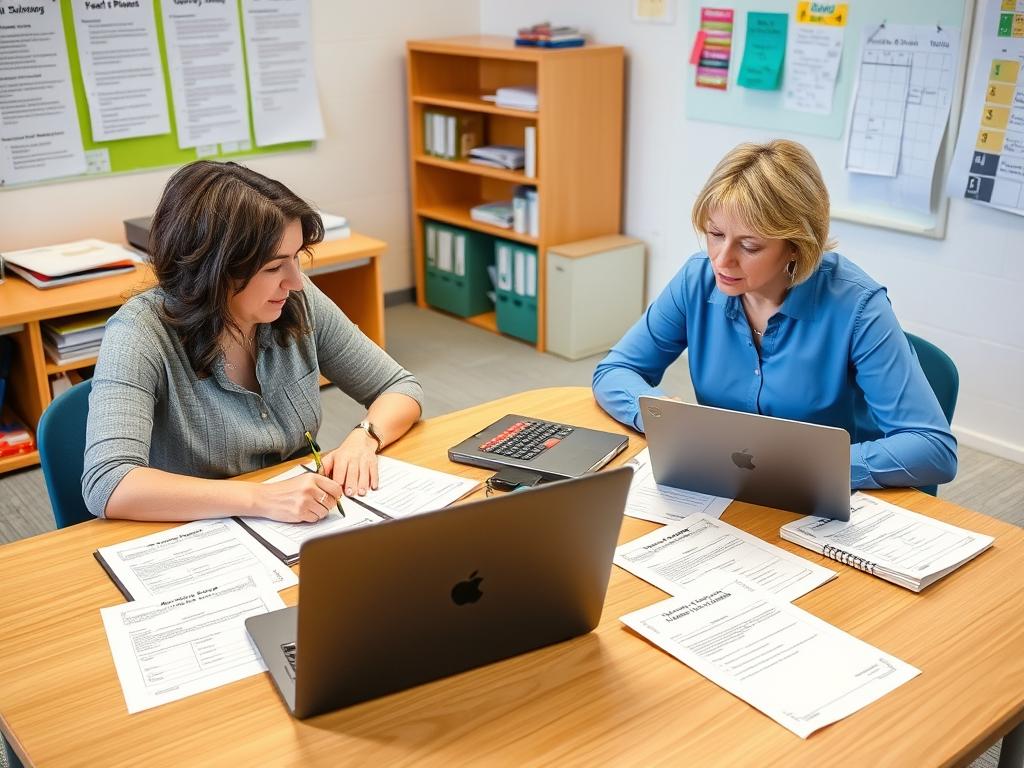
2. Prioritize Co-Planning Time
Regular, dedicated planning time is essential for effective co-teaching. Use this time to align on learning objectives, determine which co-teaching model to use, plan differentiation strategies, and prepare materials. If finding common planning time is challenging, consider creative solutions like shared digital planning documents or brief check-ins during transitions.
“The most successful co-teaching partnerships we’ve observed all share one common element: protected, consistent planning time. Without it, even the most talented educators struggle to create truly collaborative instruction.”
– Dr. Marilyn Friend, Co-Teaching Expert
3. Develop a Shared Teaching Philosophy
Take time to discuss your beliefs about teaching and learning. Understanding each other’s educational values, classroom management styles, and instructional preferences helps prevent conflicts and creates a more cohesive classroom environment. This requires reflective teacher skills and willingness to compromise.
4. Communicate Openly and Honestly
Establish regular check-ins to discuss what’s working and what needs adjustment. Create a safe space where both teachers can share concerns without judgment. Effective communication is perhaps the most important of all teacher skills in a co-teaching relationship.
5. Present a United Front to Students
Students quickly notice power imbalances between teachers. Ensure both educators are viewed as equal authorities in the classroom by sharing leadership responsibilities, referring to each other’s expertise, and supporting each other’s decisions.
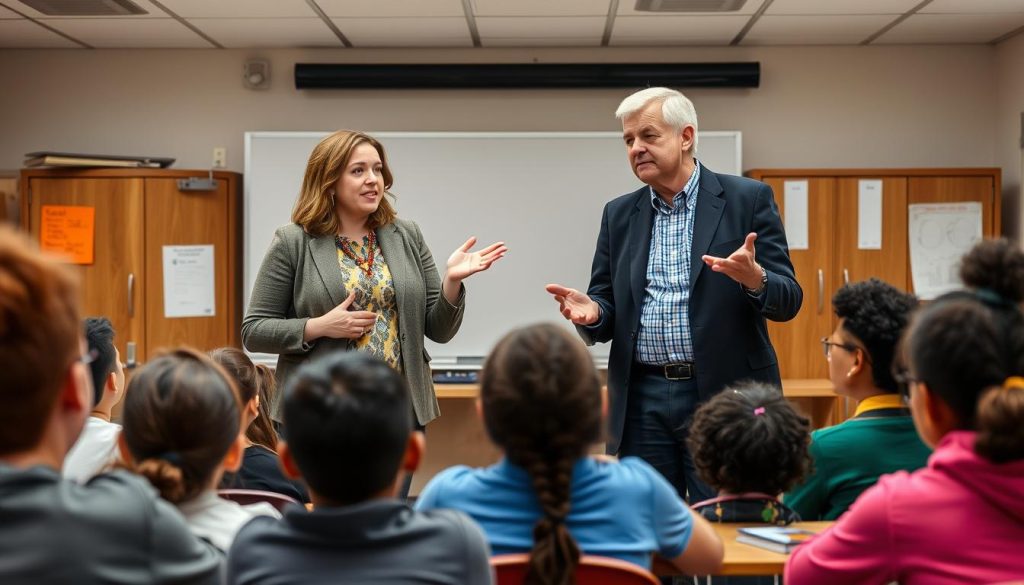
6. Embrace Flexibility and Adaptability
Be willing to adjust plans based on student needs and unexpected circumstances. The ability to pivot quickly and problem-solve collaboratively is a crucial teacher skill for co-teaching success.
7. Leverage Each Other’s Strengths
Identify and utilize the unique strengths each teacher brings to the partnership. Perhaps one excels at creative lesson design while the other has strong assessment expertise. Playing to these strengths creates a more effective teaching team.
Master These Essential Co-Teaching Strategies
Want to develop the specific teacher skills needed for successful co-teaching? Our professional development course provides practical tools, templates, and strategies to help you build an effective co-teaching partnership.
Overcoming Common Co-Teaching Challenges
Even the most committed co-teaching partnerships face obstacles. Recognizing these challenges and having strategies to address them is essential for long-term success.
Challenge: Insufficient Planning Time
Solution: Maximize efficiency with structured planning templates, digital collaboration tools, and established communication routines. Even 15-20 minutes of focused planning can be productive when well-organized.
Challenge: Unclear Roles and Responsibilities
Solution: Create a written co-teaching agreement that outlines responsibilities for planning, instruction, assessment, parent communication, and classroom management. Review and adjust this agreement regularly.
Challenge: Philosophical Differences
Solution: Focus on shared goals for student learning while respecting different approaches. Use evidence-based practices as common ground and be willing to compromise on methods when goals align.
Challenge: Perceived Power Imbalance
Solution: Intentionally share leadership in the classroom. Ensure both teachers’ names are on all communications, alternate who leads different activities, and publicly acknowledge each other’s expertise.
Addressing these challenges requires developing specific teacher skills in conflict resolution, negotiation, and professional collaboration. With practice and commitment, most co-teaching obstacles can be overcome.
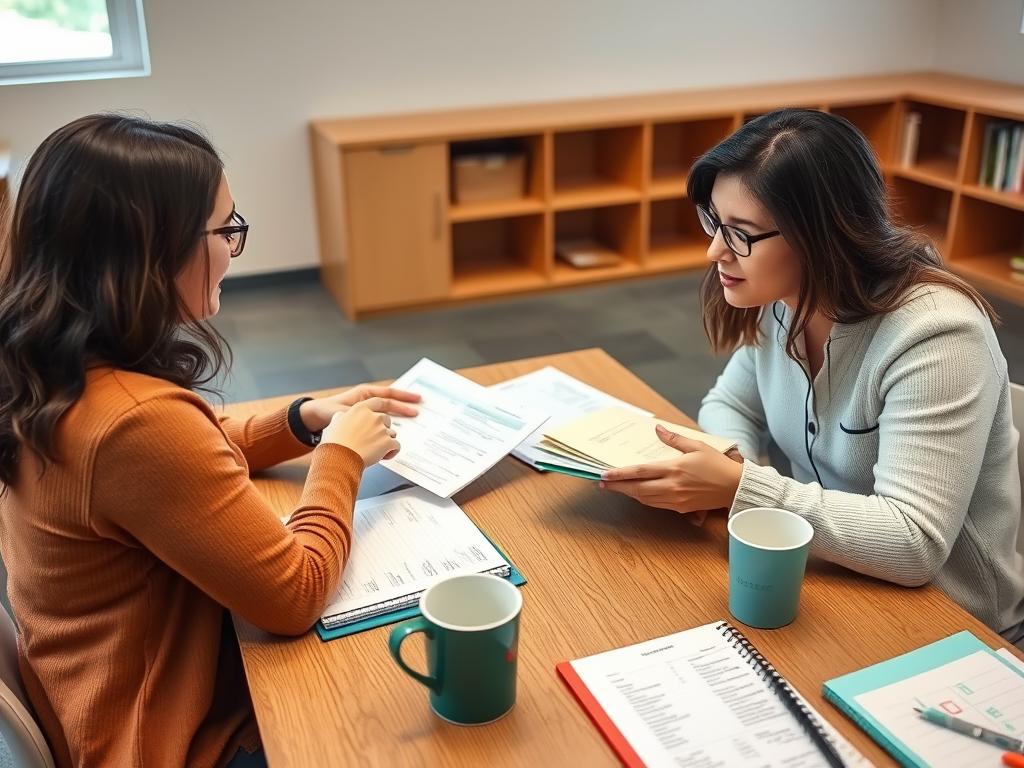
Securing Administrative Support for Co-Teaching
Administrative support is crucial for successful co-teaching implementation. School leaders play a vital role in creating the conditions for effective partnerships to flourish.
What Teachers Need from Administrators:
- Dedicated planning time built into the master schedule
- Professional development focused on co-teaching models and collaborative teacher skills
- Thoughtful pairing of co-teachers based on teaching styles and personalities
- Appropriate scheduling that limits the number of different co-teaching partners
- Clear expectations for co-teaching implementation and evaluation
- Ongoing support through coaching and problem-solving assistance
How to Advocate for Administrative Support:
If you’re not receiving the support needed for effective co-teaching, consider these advocacy strategies:
- Present research on co-teaching benefits to administrators
- Request specific supports with clear rationales
- Propose creative solutions to scheduling challenges
- Document successes and challenges to inform future planning
- Seek external professional development opportunities to build teacher skills
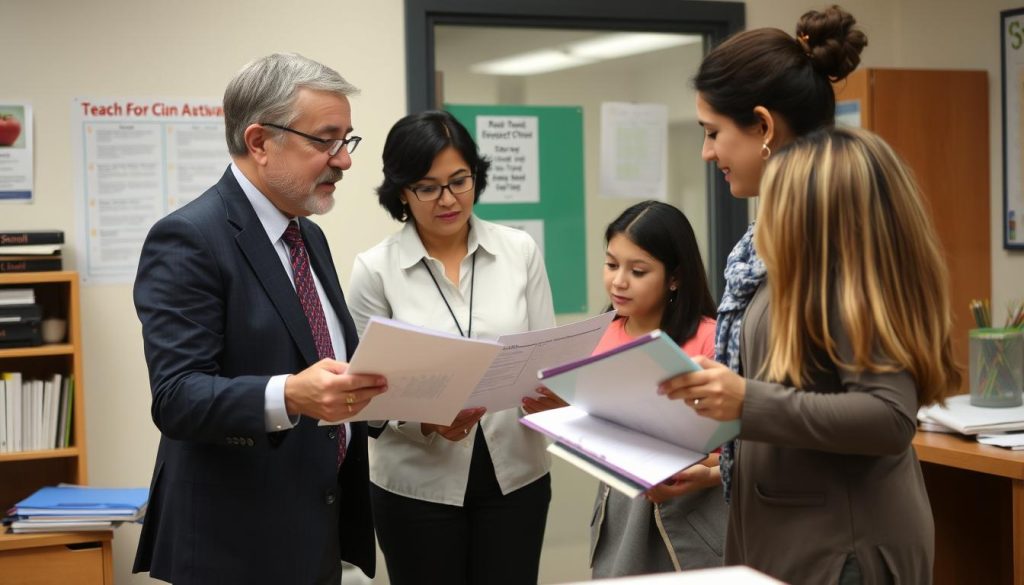
Co-Teaching Assessment and Reflection
Regular assessment of your co-teaching practice is essential for growth and improvement. Effective co-teachers engage in ongoing reflection about what’s working, what needs adjustment, and how to better meet student needs.
Self-Assessment Questions for Co-Teachers:
| Area | Reflection Questions |
| Planning | – Are we both contributing equally to lesson planning? – Do our plans include differentiation for diverse learners? – Are we using a variety of co-teaching models? |
| Instruction | – Do both teachers have active, meaningful roles during class? – Are we leveraging each other’s strengths effectively? – Are transitions between teacher roles smooth and purposeful? |
| Assessment | – Do we share responsibility for grading and feedback? – Are we using assessment data to inform our teaching? – Do we have a system for monitoring individual student progress? |
| Relationship | – Do we communicate openly about challenges? – Are we resolving disagreements professionally? – Do we celebrate successes together? |
| Student Impact | – Are all students making appropriate progress? – Do students view both teachers as equal authorities? – Is our co-teaching improving engagement and participation? |
Regular reflection builds metacognitive teacher skills and helps co-teaching partnerships evolve and improve over time. Consider scheduling monthly reflection meetings to discuss these questions and set goals for continued growth.
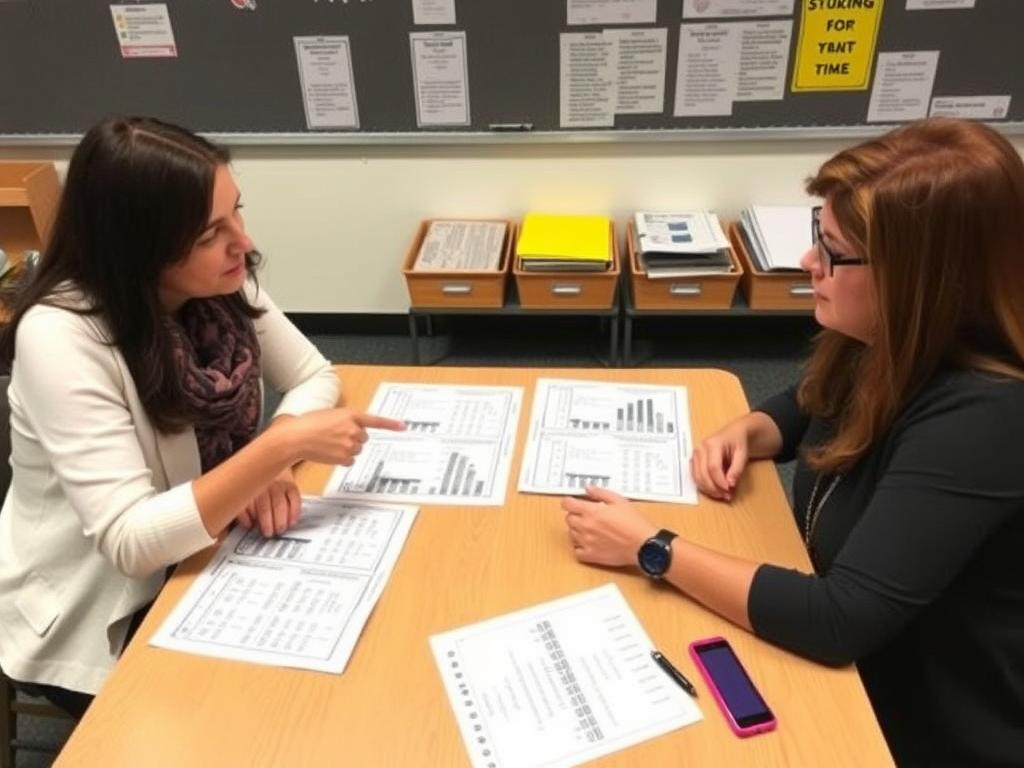
Professional Development for Co-Teaching Excellence
Continuous learning is essential for co-teaching success. Investing in professional development helps both teachers build the specific teacher skills needed for effective collaboration.
Key Areas for Professional Growth:
- Co-teaching models and when to use each approach
- Collaborative planning strategies and tools
- Differentiation techniques for diverse learners
- Communication skills for productive partnerships
- Conflict resolution approaches for professional disagreements
- Assessment practices for co-taught classrooms
Develop Essential Co-Teaching Skills
Ready to take your co-teaching to the next level? Our comprehensive professional development course provides practical strategies, collaborative planning templates, and expert guidance to help you build a successful co-teaching partnership.
Professional learning communities (PLCs) specifically for co-teachers can also provide valuable support and idea-sharing opportunities. Consider forming or joining a co-teaching PLC at your school or district to connect with others facing similar challenges.
Conclusion: The Co-Teaching Journey
Co-teaching represents a powerful approach to meeting diverse student needs while providing professional growth opportunities for educators. When implemented with intention, clear communication, and mutual respect, co-teaching can transform classroom instruction and improve outcomes for all students.
Remember that effective co-teaching partnerships develop over time. Be patient with the process, celebrate small successes, and view challenges as opportunities for growth. By continuously building your collaborative teacher skills and maintaining a student-centered focus, you and your co-teacher can create a classroom environment where all learners thrive.
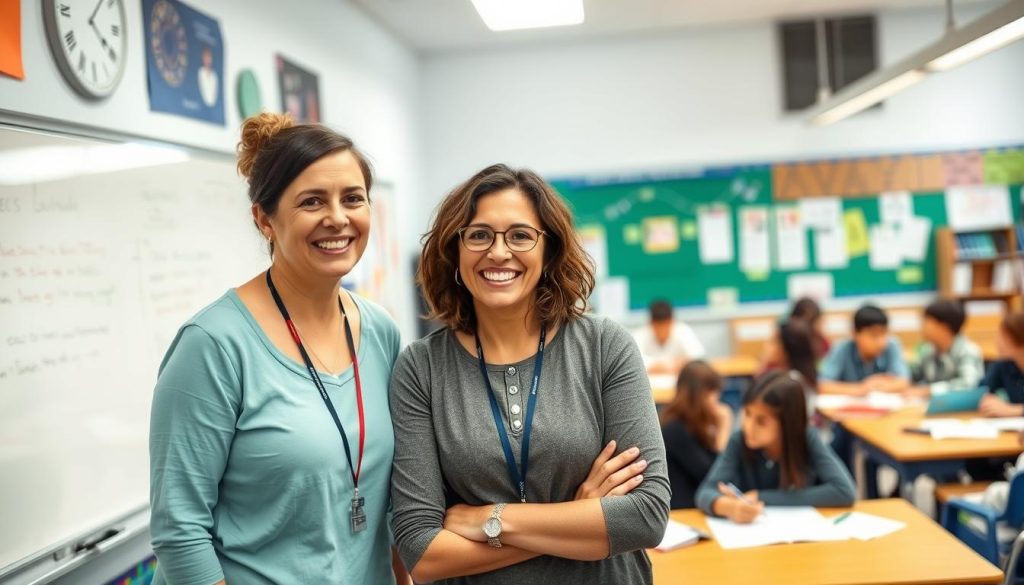
Ready to Transform Your Co-Teaching Practice?
Take the next step in your professional journey with our comprehensive co-teaching course. Develop the specific teacher skills you need to create an effective, collaborative classroom that supports all learners.




